Charts
may be difficult to read as they have had to be reduced in size
to fit on screen. You can, however, click on any chart (not
the maps) and it will reload in a new page at full size and
be much clearer.
January
2009
January
showed a drop in the number of reports received - only fifteen.
Of these, about half were from sites included in the December
survey.
Being a
somewhat stable time of year for birds, the only variation expected
would relate to weather conditions where perhaps more birds
may come to gardens in search of food. In fact, such variation
proved to be minimal and the overall sightings showed a marked
resemblance to the December figures.
Overall
Sightings
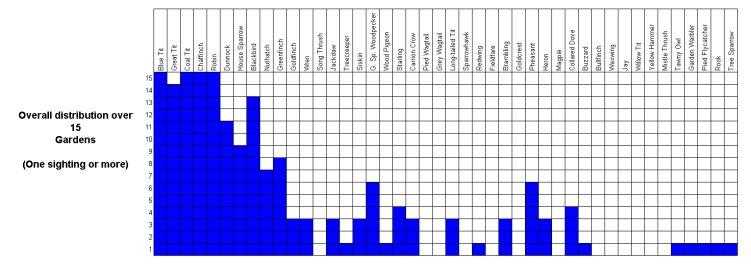
The same
information in a different form -
All
reports by location

Once again
the Tit family (Blue, Great & Coal), together with Blackbird,
Robin Chaffinch & Dunnock, are obviously very widespread
and plentiful. House Sparrows are very sporadic, common in some
gardens, totally absent in others. There are still fairly few
reports of Wren. Long-tailed Tits seem down a bit on last month
but they are still being seen regularly in some gardens. Greater-spotted.Woodpecker
and Collared Doves are still being recorded but only in a few
locations. Heron sightings are down, better weather is probably
allowing them to feed elsewhere now. Brambling continue to be
reported in a few isolated gardens, they are certainly not widespread
this winter. Again, there were no recorded sightings of Song
Thrush, Grey Wagtail, Redwing, Fieldfare or Goldcrest. There
are some new ones, though. One record of a Tawny Owl, one of
a Rook, one garden reporting daily Tree Sparrow. Two more are
thought to be mistaken identity (and we all get it wrong sometimes),
one of Garden Warbler and one of Pied Flycatcher. These are
regarded as summer birds although there are reliable reports
of Garden Warbler over-wintering. Pied Flycatchers are very
unlikely but, who knows, perhaps there is one still around.
We have still included these two birds on our list.
Now the
maps. We have again included only selected species. If anyone
out there would like to see more species listed, please get
in touch and we will see what we can do.
You can
change this map view to show the locations where some selected
birds were seen and not seen. The symbols used are:
|
 reporting point
reporting point
|
 sighting location for selected bird.
sighting location for selected bird.
|
The choice
of display is from the following options -
To give
an indication of how common all these birds are, here are some
more charts - they are not easy to make out as we have to reduce
their size considerably to fit the web page! To see them in
full size, simply click on the required chart.
Birds
seen daily - very common
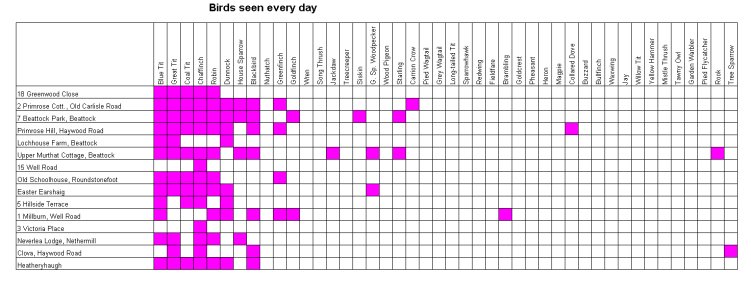
Birds
seen on three-quarters of days or more - common
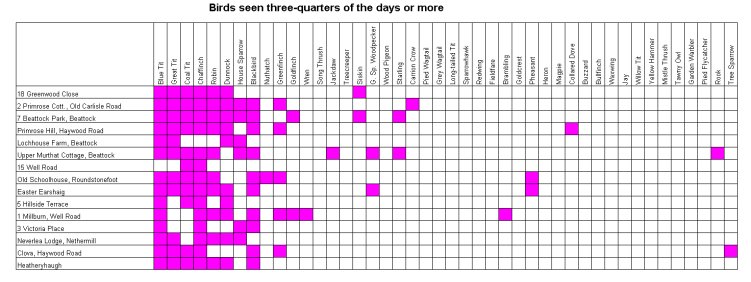
Birds seen on between half and three-quarters
of days - fairly common
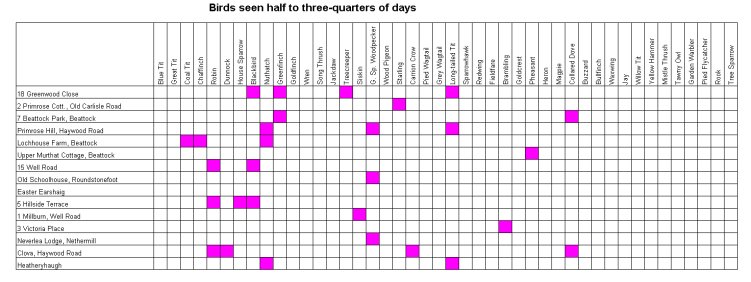
Birds seen only on between one quarter and
half of days - less common
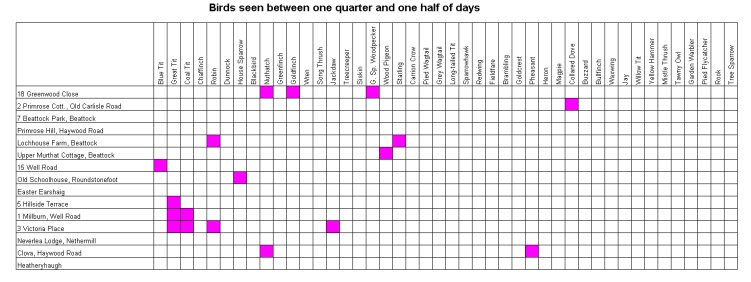
Birds only seen on less than one quarter
of days - uncommon or occasional


